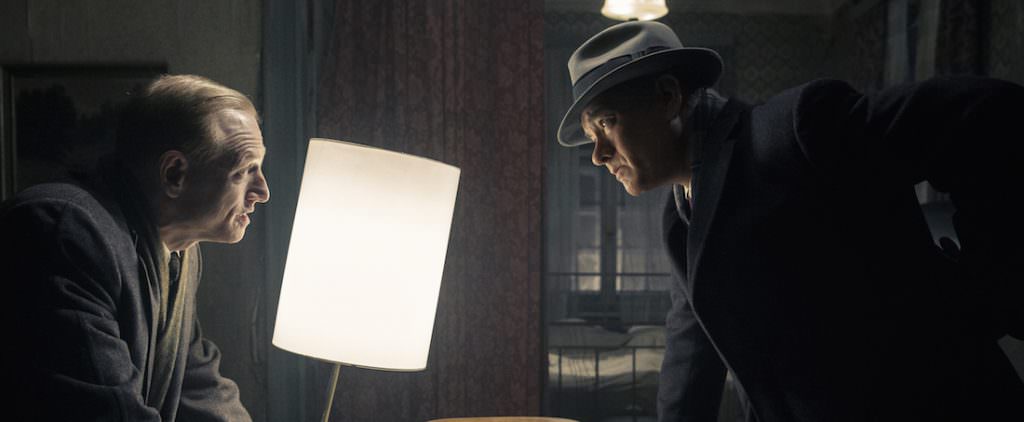NYFF: Bridge of Spies is Spielberg & Hanks at Their Best
Last week, at the New York Film Festival, we were treated to a preview of what will certainly be one of the biggest films of the year, Bridge of Spies. Set to open today, October 16, this historical thriller covers the 1960 Cold War crisis that followed the shooting down of an American U-2 spy plane over Soviet territory and the capture of its pilot, Francis Gary Powers.
Steven Spielberg is in top form, with a script by Matt Charman (Black Work, Our Zoo) and the inimitable four-time Oscar-winning team of Ethan and Joel Coen that mirrors character against character and era against era. Rather than focusing on Powers, the story is told from the perspective of a Brooklyn insurance lawyer who ends up as a key player in negotiating Powers’ release – James Donovan, played by Tom Hanks. Although the moral center of the film, Donovan is not the only character that earns our respect—the Soviet spy, Rudolf Abel (a fantastic Mark Rylance) bring a solemn, powerful dignity to a film that puts him, very often, at the center of our thoughts.
We enter in 1957 and are in familiar, if gorgeously realized, Cold War setting. Men in crisp suits and hats, a chase between the CIA and the aforementioned Soviet spy Abel, and a nearly wordless and perfectly executed sequence in which the CIA follows Able onto a subway car and quickly loses him on the platform in a sea of men in gray.
The CIA tasks Donovan with the near impossible job of representing the very unpopular Abel. Donovan faces public and private disapproval for his fair and compassionate defense (he previously assisted in the 1945 Nuremberg Nazi war criminal trial). Seeing how he handled that case with such care, the government assigns him the even more impossible task – negotiating the release of Francis Gary Powers (Austin Stowell) in exchange for Abel. The plot provides many clever, subtle twists and turns that complicate Donovan’s mission. Hanks is, predictably, fantastic, giving a lively, humane performance without turning his Donovan into a two dimensional “man of principle.”
Bridge of Spies is, in a word, gorgeous. The scenes are all beautifully shot and the attention to detail is meticulous, thanks to the work of Spielberg’s longtime cinematographer, two-time Oscar winner Janusz Kaminski, production designer Adam Stockhausen and the rest of the stellar crew. Much of the filming took place on the streets of Brooklyn, Potsdam and Berlin.
What also resonates is watching the creation of the surveillance state in Germany and the mirror it holds up to our own era. Bridge of Spies captures the essence of a time of extreme suspicion between the United States and the Soviet Union, a time of McCarthyism and the Red Scare, while also showcasing how the sources of anxiety may change over time but anxiety itself never abates. Bridge of Spies also reflects on how ‘fear of the other’ was as much a part of daily life then as it’s become the subtext of political campaigns and politics in general to this day. The outrage that the courtroom viewers had, the looks cast upon Donovan are a reminder of how distrustful, how fearful people were – suspicion that your neighbor or your child’s teacher could be a spy – the consequences if he or she was not apprehended.
In a film filled with great performances, including Amy Ryan as Donovan’s wife and Alan Alda as his partner Thomas Watters, Tom Hanks’ rich portrayal of Donovan and Mark Rylance’s soulful turn as Rudolf Abel make this movie – one’s the moral center in a perilous time, the other’s a patriot, or rather a comrade, who finds himself as a bargaining chip between two superpowers. In a rousing speech, Donovan reminds his CIA handler (Scott Shepherd) and the audience that sometimes we need to stick to our morals and do what we know is right, not what is easy. To Abel, he’d already done that according to his own beliefs.




